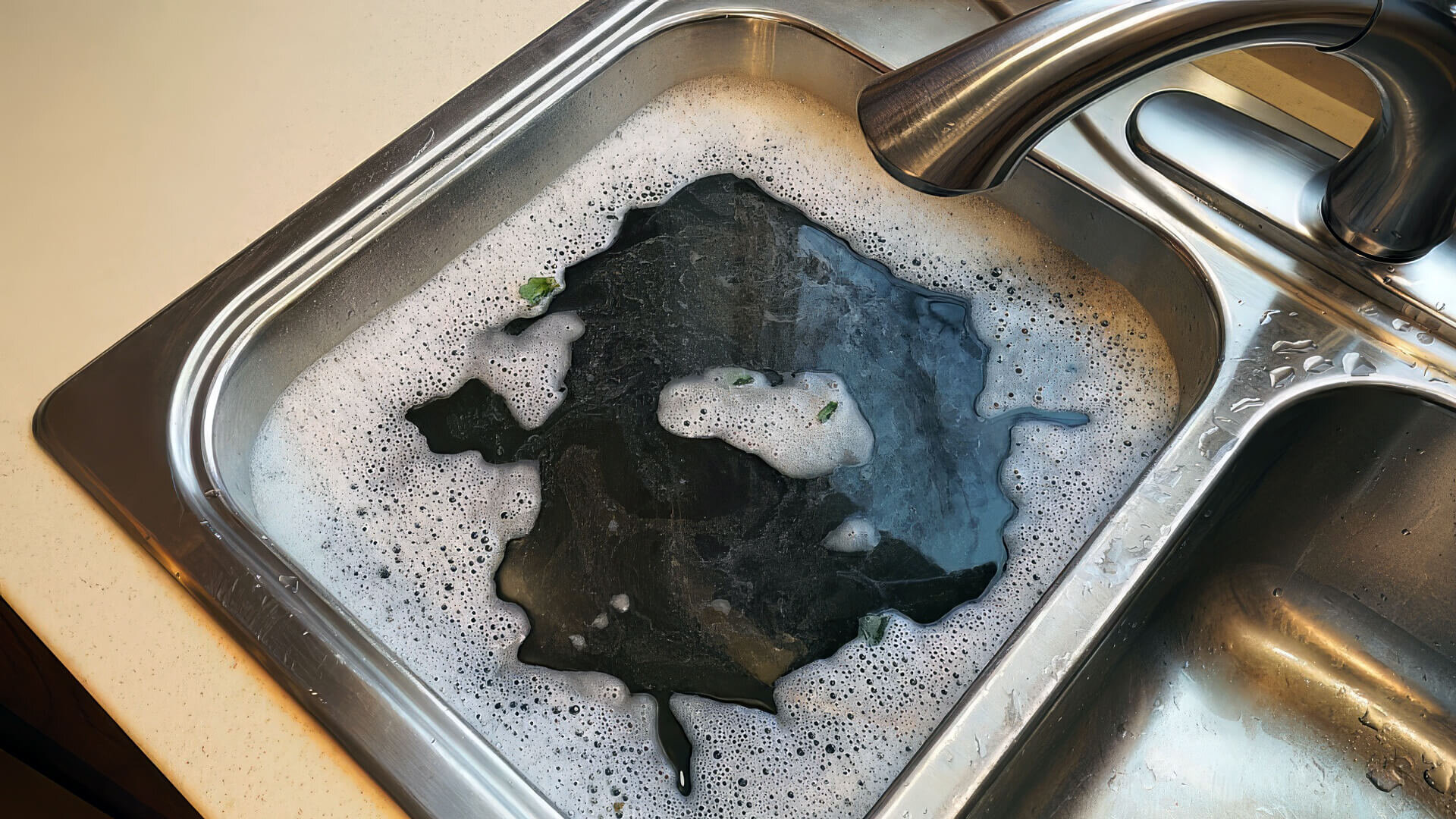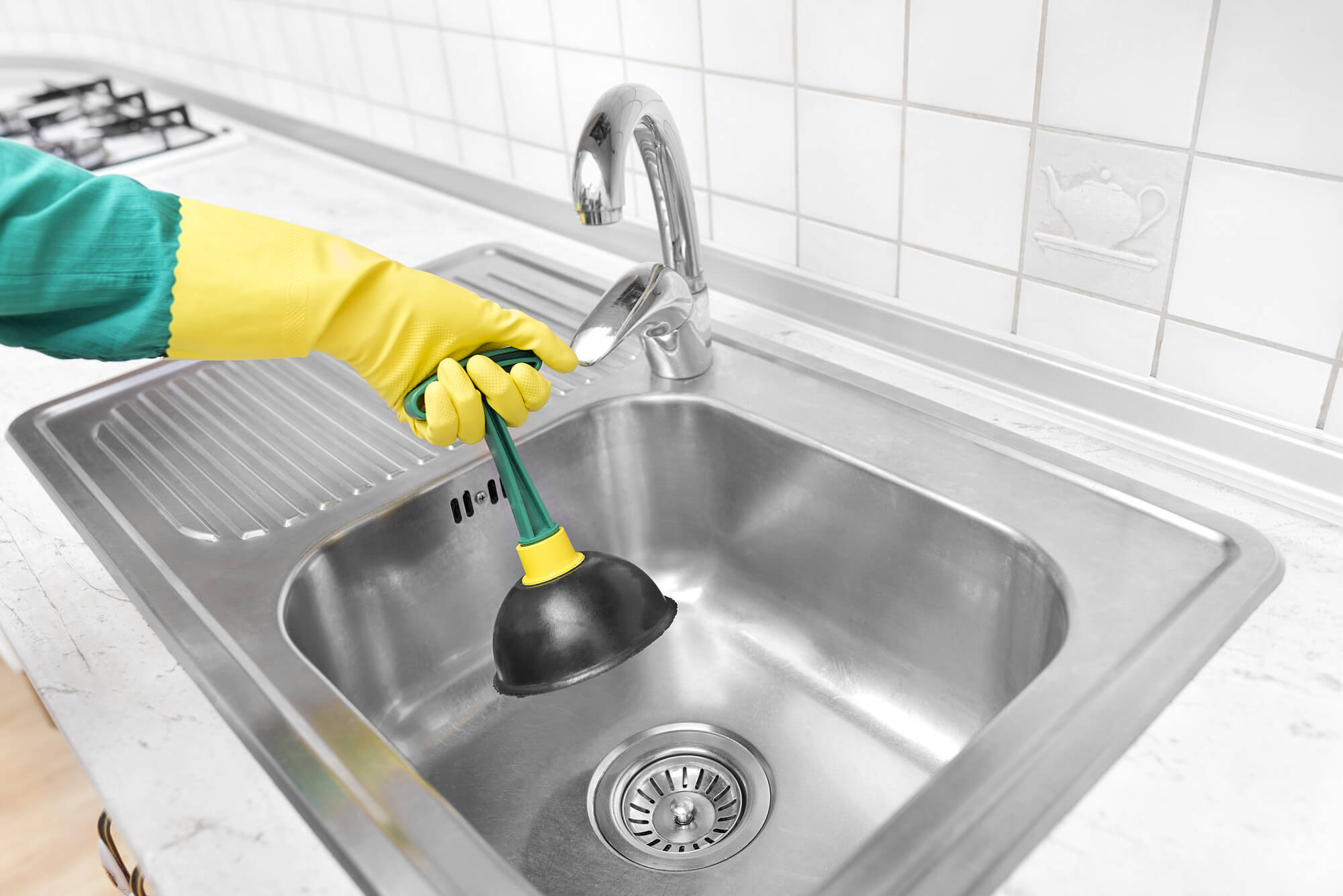Straightforward Instructions To Resolve A Slow-Draining Sink
Straightforward Instructions To Resolve A Slow-Draining Sink
Blog Article
They are making a few good points related to Solved! How to Fix a Slow Sink Drain as a whole in this article followed below.

Introduction
We have actually all been there: You're brushing your teeth or cleaning your hands, and you discover the water pooling in the sink. Instead of promptly swirling down the drain, it sticks around, transforming your once-refreshing early morning regimen into a mini overload scene. A slow-draining sink isn't simply bothersome; it's typically a sign of larger pipes concerns prowling under the surface area. The good news is that the majority of slow-draining sinks can be fixed with a little expertise, a few fundamental devices, and some persistence. Ready to tackle this task head-on? Allow's roll up our sleeves and dive right in.
Recognizing the Root Causes Of a Slow-Draining Sink
Before you start poking around in your pipelines, it helps to understand what could be creating the slowdown. Recognizing the origin makes it less complicated to pick the appropriate solution.
Usual Wrongdoers Behind Slow Drain
So, what's blocking points up? Generally, it's a blend of everyday debris-- think hair, soap residue, tooth paste deposit, and remaining food particles. Over time, these little bits collect and cling to the pipe wall surfaces, progressively narrowing the passage and making it harder for water to go through. In many cases, mineral deposits from difficult water can also include in the substance, producing the excellent tornado for stubborn blockages.
When is it Time to Take Action?
If you discover the water draining pipes slower than typical, it's a great concept to step in faster rather than later on. Waiting too long could bring about finish obstructions, unpleasant odors, or perhaps pipe damages. If the water takes greater than a few seconds to clear out after turning off the tap, consider it a red flag and prepare yourself to place on your DIY hat.
Devices and Materials You'll Require
The right tools make all the difference. Fortunately, you will not require a totally equipped plumber's van to get the job done.
Necessary Devices for Do It Yourself Services
A plunger is your go-to starting factor. A small, sink-sized bettor produces suction that can displace minor blockages. For more relentless blockages, a drain serpent (often called a plumbing's auger) functions wonders. A set of handwear covers, a flashlight, and perhaps a set of safety goggles are likewise convenient.
Recommended Cleansing Solutions
Moderate meal soap and hot water can help break down oily accumulation. A mix of baking soda and vinegar is a tried and true natural remedy, and enzymatic cleaners offer an even more green technique. Keep chemical drain cleansers as a last option, as they can be extreme on your pipes.
Safety First: Preventative Measures and Prep work
Before you launch into unclogging setting, think about safety and security. You're managing potentially unclean water and particles, so slip on a set of gloves. If you're using chemical cleaners, make sure the space is well-ventilated and adhere to the instructions on the tag.
Safety Equipment and Work Area Arrangement
Set some old towels or rags around the sink location to capture dashes. Clear away any items that could get in your method, like soap dispensers or toothbrush holders. See to it you have good lights-- order a flashlight if needed.
Step-by-Step Overview to Repairing a Slow-Draining Sink
Currently, let's enter the nitty-gritty. This step-by-step procedure will lead you with basic techniques to recover your sink's water drainage.
Step 1: Get Rid Of and Clean the Stopper
Often, the stopper (that little plug you lower to block water) is the first offender. Remove it carefully and clean off any type of hair or substance trapped around its base. Rinse it extensively prior to placing it back in position.
Action 2: Utilize a Plunger to Remove Debris
Got that bettor ready? Setting it over the drainpipe and give it a couple of company pumps. The concept is to create suction that can loosen any kind of obstruction. If you see bits of debris floating up, you're on the best track.
Action 3: Try a Drain Serpent or Cord Wall Mount
If the plunger doesn't do the trick, it's time to draw out the drain snake. Delicately feed it right into the drain and twist as you go. You may really feel some resistance-- that's most likely the blockage. Maintain turning and pulling till you remove the blockage. If you do not have a drainpipe serpent, a straightened cord hanger can work in a pinch.
Step 4: Use a Do It Yourself Drainpipe Cleaner
A natural cleaner made from baking soda and vinegar can break down recurring gunk. Pour half a cup of cooking soda into the drainpipe, complied with by half a cup of vinegar. Let it fizz for about 15 minutes, then flush with warm water. This chemical reaction usually does marvels for small obstructions.
Tip 5: Reconstruct and Check the Sink
Placed whatever back together and run the faucet. Does the water now swirl away at a decent speed? If yes, provide on your own a pat on the back. If not, don't despair-- there are still a few more dress up your sleeve.
Alternative Methods for Stubborn Clogs
Not all clogs are produced equivalent. If your sink still declines to work together, take into consideration these different remedies.
Baking Soda and Vinegar Method
We currently discussed this, but it's worth noting once again. This gentle, eco-friendly approach is more secure than chemical cleansers and usually rather efficient.
Chemical Drain Cleansers
Enzyme-based cleaners use natural microorganisms to digest raw material. They're an outstanding choice if you're wanting to avoid harsh chemicals. Just remember, they might take a bit longer to work their magic.
Chemical Drain Cleansers: Benefits And Drawbacks
Chemical cleaners can blast through difficult clogs quick, however they're not without downsides. They can create warmth and fumes, damages pipelines if made use of excessively, and position environmental threats. Utilize them sparingly, and constantly comply with the instructions thoroughly.
Preventive Measures to Maintain Your Sink Flowing
Avoidance is the very best treatment. By adopting a few easy routines, you can maintain your sink from reducing to begin with.
Routine Cleaning Up Habits
Clean down the sink basin and component area consistently. Remove hair or food bits prior to they have a possibility to wash down the drainpipe.
Preventing Damaging Compounds Away
Hesitate before discarding coffee grounds, oil, or fibrous vegetable scraps down the sink. These offenders cling to pipe wall surfaces, producing obstructions in time.
Routine Upkeep Checks
Schedule a fast monthly inspection. Run hot water with the sink for a few minutes, taking note of the circulation. If it appears slow, act quickly before it becomes a full-blown blockage.
When to Call an Expert Plumber
In some cases, no matter how difficult you try, that block simply will not budge. That's when it's time to bring in the pros.
Indications That Suggest a More Significant Concern
If your sink drains gradually in spite of numerous efforts, or if you discover water backing up in various other components (like your shower or commode), you may have a much more significant pipes issue prowling much deeper in the system.
Stabilizing DIY Efforts with Specialist Assistance
While do it yourself can conserve you money and supply a sense of success, there's no shame in calling a professional. A professional plumbing technician can assess your whole plumbing arrangement, making sure there's no underlying damages or long-lasting trouble that can cost you a lot more in the future.
Contrasting Prices and Long-Term Solutions
Before making a decision, take into consideration the big picture. An inexpensive, quick fix might fix the trouble briefly, yet investing in a more long-term service can conserve you money and stress in the future.
Weighing the Expenditures of DIY vs. Specialist Solutions
Do it yourself repairs frequently set you back little greater than the price of a plunger or a container of cooking soda. Professional services, on the other hand, included a price however may protect against repetitive concerns and costly repairs later on.
Purchasing Top Quality Fixtures and Upgrades
If your sink's design contributes to regular blockages, it might be worth upgrading to higher-quality fixtures or changing the plumbing layout. Consider this a financial investment in your house's functionality and convenience.
Final thought
A slow-draining sink can feel like a minor inflammation, but it's typically a sign that your pipes requires a little tender loving care. By recognizing the source, using the right devices and techniques, and committing to easy safety nets, you can maintain your sink moving easily. And when all else falls short, never ever hesitate to employ an expert-- your home's pipes deserves the financial investment in care and upkeep.
4 Tips to Fix a Slow Draining Sink
Removing the Pop-Up
This is a great place to start when it comes to troubleshooting a slow draining sink. If your sink has a pop-up, carefully take it out and remove debris that has built up around the tool. This will also allow you to see if there are any significant blockages in the drain that you can pull out on your own to help clear up the issue.
Use a Zip-It Tool
Like a snake for a large drain, a zip-it tool helps clear out any debris or hair from a sink drain. A tool like this can be used with a drain that pops out or not as it s thinner than most snake-like tools.
Use a Drain Cleaner
Whether making an at-home cleaner or buying a solution at the store, this is a common fix many turn to when it comes to a slow draining sink. There are several options available for purchase at local supermarkets, but for those who prefer to create their own solution, one of the most common is the following.
How to Unclog a Drain Naturally
Pour boiling water down the drain Pour cup of baking soda down the drain Pour cup of vinegar down the drain Wait 10 minutes Pour boiling water down the drain again Turn on the hot water faucet to clear out the solution Use a Plunger
As a worst-case scenario option, a plunger may be a good option for those who are still struggling to get debris out of their drain. This could be especially useful if there is a large item that you suspect may be significantly stuck down the drain.
https://www.abaileyplumbing.com/blog/2021/august/4-tips-to-fix-a-slow-draining-sink/

Hopefully you liked our topic about . Many thanks for taking a few minutes to read through our blog. Sharing is good. Helping others is fun. I praise you for your time. Kindly pay a visit to our site back soon.
Further Details Report this page